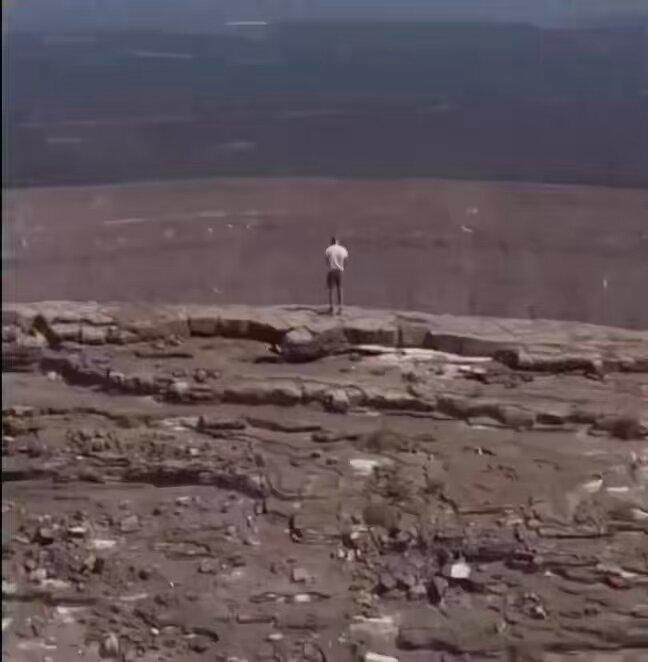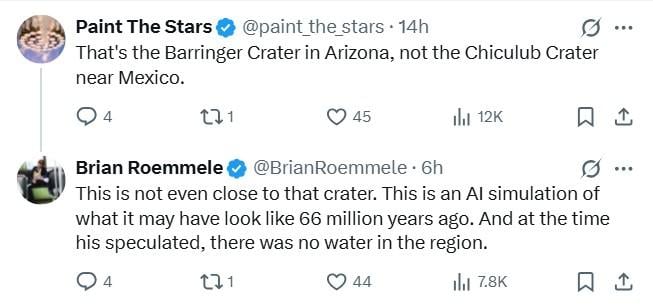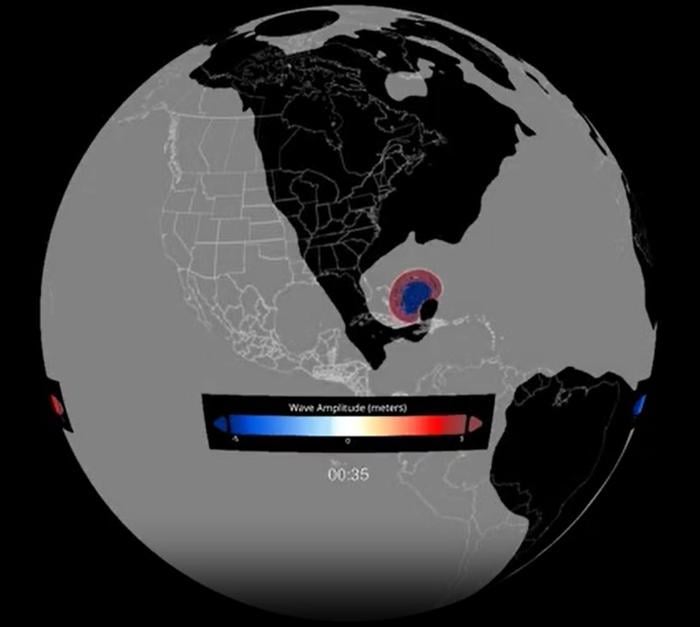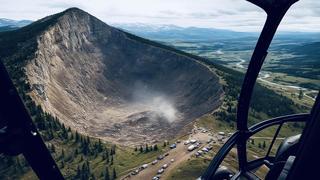
Does a video show a man standing on the edge of the Chicxulub Crater which was formed when an asteroid slammed into the earth about 66 million years ago? No, that's not true: In follow-up comments under the post, the author says "This is an AI simulation of what it may have look like 66 million years ago". They suggest the crater was once on dry land but is now mostly covered by water -- but this is incorrect. The asteroid's impact on the Yucatan Platform triggered a global tsunami -- the newly formed crater was underwater at the time. The Yucatan Peninsula along with a portion of the submerged Chicxulub crater later became exposed with sea level changes.
The video appeared in a post (archived here) published on X by @BrianRoemmele on Nov. 18, 2025. It is captioned:
This is the Chiculub Crater, created around 66 million years ago when a massive asteroid slammed into Earth. The impact unleashed energy equal to billions of nuclear bombs, sparking wildfires, triggering massive tsunamis, and blasting so much debris into the atmosphere that sunlight was blocked for months. Without sunlight, plants withered, ecosystems collapsed, and about 75% of all life on Earth-including the dinosaurs-went extinct. It was one of the greatest disasters in Earth's history. But out of that devastation came a new beginning. With the dinosaurs gone, mammals took hold.
This is a screenshot of the video:
(Image Source: Lead Stories screenshot from x.com/BrianRoemmele/status/1990662605590130751.)
In a comment under the post, @BrianRoemmele replied (pictured below) to someone who thought the video showed a crater in Arizona. He wrote:
This is not even close to that crater. This is an AI simulation of what it may have look like 66 million years ago. And at the time his speculated, there was no water in the region.
(Image Source: Lead Stories screenshot from x.com/BrianRoemmele/status/1990791941525819533.)
This reply is in conflict with the relatively recent scientific understanding of what happened 66 million years ago. Scientists discovered the Chicxulub Crater's location in 1990. The asteroid made impact on the Yucatan Platform through shallow sea water, triggering a global tsunami. An article (archived here) on Britannica.com describes:
Today the crater is partly underwater and partly covered by rainforest. However, evidence of the crater's rim can be seen in its effect on groundwater flow in the region, which is deflected around the crater's rim. The deflected groundwater flows have in turn dissolved limestone, leading to many sinkholes, locally called cenotes.
An animated simulation of that tsunami (archived here) can be found on the website of the National Oceanic and Atmospheric Administration (NOAA). The simulation (pictured below) shows the complex modeling of the movement of the peaks and troughs of the waves triggered by the over six-mile-wide asteroid's impact. The model also shows the shape and position of the land masses (black shapes) as they were 66 million years ago, and their positions relative to the current familiar continental shapes and political boundaries (white lines).
(Image source: Lead Stories screenshot from sos.noaa.gov/catalog/datasets/tsunami-asteroid-impact-66-million-years-ago.)
Lead Stories reached out to the Lunar and Planetary Institute for comment and will update this article if we receive a reply.

















